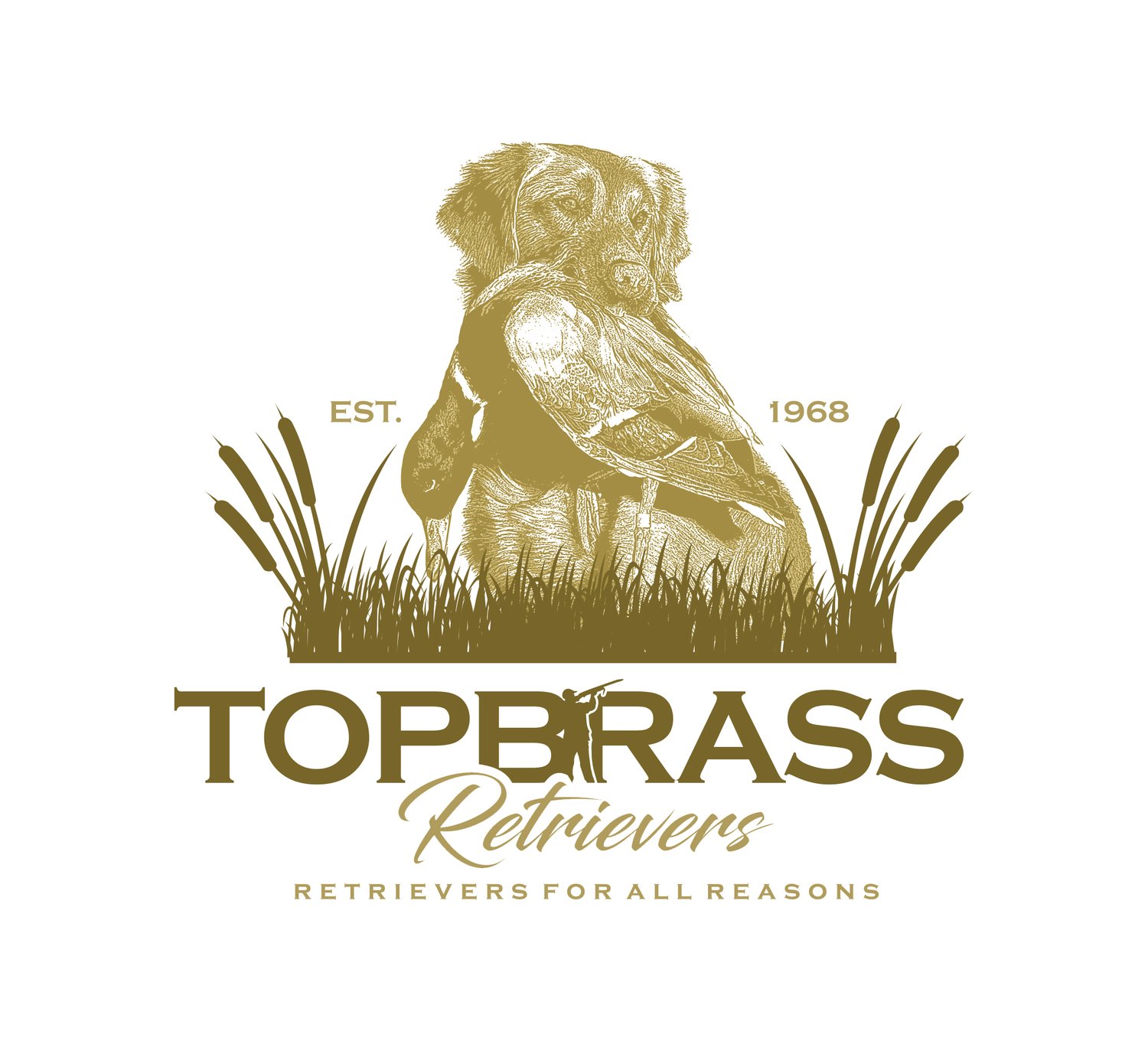Starting an upland pup
I love to go upland hunting with my Topbrass Goldens and would like to share some tips I’ve learned over the years in training Golden Retrievers for upland work. So many people think that retrievers in general are waterfowl dogs, but I’ve learned that Topbrass Goldens excel in the fields as well.
Most of my close dog friends and relatives are Spaniel people. I have learned training techniques from them and adapted their spaniel training for my Goldens. I’m not a pro but have trained numerous Goldens for upland work, receiving AKC Master Upland titles on them.
All of my dog training is done with the idea of using the dog for upland hunting. Training for this type of hunting is a bit different than training for retriever work or trials. I rely on the dog’s natural hunting ability (nose) to find and trail game. The dog is also taught to quest for game (quartering) between hunters working a piece of ground. This is done through whistle commands and tones to call the dog in and to turn the dog to go in the opposite direction. With that being said I’ve learned over the years when out hunting with my Goldens, you need to be able to read your dog and know when he is birdie. Allow him to pursue the possible bird by following your dog and don’t be too focused on you controlling him. The dog also needs to be able to mark well so that it can retrieve shot birds on land or water similar to waterfowl retriever work.
I start out when the pup is very young teaching whistle commands. This can be done as soon as you get the pup. You can start laying the basic foundation for whistle commands very early but keep it fun for the pup. I use a pea-less whistle, sometimes referred to as an English whistle. In my opinion the two most important whistle commands are the “here” whistle and the sit/stay whistle. It doesn’t matter what you use for the whistle command as long as it is simple and you are consistent with it.I use a long slow blow on the whistle as my “here” whistle. The first command I train is the here whistle which I start with them at feeding time. As the pup is eating I blow the “here” command which starts to imprint that command on the pup which associates it with food and pleasure. Once the pup starts to come to the whistle in the yard I introduce the verbal command “here” along with the whistle and lots of positive reinforcement. As the pup continues to progress (possibly around 12 weeks) I will put a small E-collar on him and incorporate the tone function of the collar with the “here” command. I do this so that when I’m out hunting with the dog I can be somewhat quiet and still have the dog come in without being loud with the whistle or verbally.
The next command is the sit/stay whistle. This is taught just as you would teach the normal sit but I use a whistle command first before I teach a verbal command. I will blow the sit command and push down on the butt and pull up on the collar. For this command I use one quick sharp toot on the whistle. I use a lot of positive reinforcement at a young age. Once the pup has the whistle command down fairly well, I start the verbal along with the whistle. As the pup gets older I will collar condition it and use the e-collar to reinforce the behavior I’m looking for in conjunction with positive reinforcement. I will slowly work the sit command at further and further distances from me.
This is the start of having your Golden become a pleasure to hunt within the upland fields. It is about the two of you working as a team to find game and enjoying yourselves.
Tom Matterer
Tom Matterer along with his wife, Lynn, have worked with Topbrass for many years raising wonderful litters for us. They are located in Monroe, NC. Tom not only hunts with his Topbrass girls but he also competes in AKC upland hunt tests.

